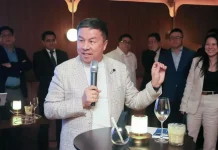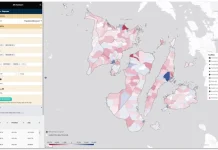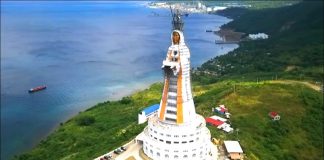A ship engineer from Aklan province is leading the Philippines in harnessing the energy of ocean waves in propelling the Hybrid Trimaran – a new fast craft passenger cargo vessel projected to improve the country’s maritime industry.
The Philippine Hybrid Trimaran will accommodate an estimated 100 passengers, 4 vans, and 15 motorcycles, announced the Department of Science and Technology (DOST).
The hybrid craft is envisioned to be comparable to the Philippine Roro (roll- on, roll-off) ship but equipped with the power of the trimarans sailing yachts designed for recreation or racing.
The technology of harnessing waves is expected to improve the energy efficiency of the ocean craft resulting in a cost-efficient and environment-friendly ship.
The Philippine trimaran will still use gas power during port maneuvering, but will revert to ocean wave energy when it sails in open water.
Steel will be used to build the vessel to ensure higher structure efficiency and better wave resistance.
The harnessing of waves energy is designed with the following specifications:
- Wave energy double action hydraulic pumps will be integrated in the outriggers of the hybrid craft.
- The mechanical movements in the pumps will be converted to electrical energy that can be used to provide additional power to the vessel.
- The more waves that the vessel encounters, more power will be produced.
Additional measures are to be built in to ensure safety of the passengers and cargo at sea:
- The vessel will utilize multi-engine technology that prevents it from encountering total engine failures while at sea, minimizing maritime accidents.
- It will also be constructed with a specifically engineered design to address the possibility of capsizing, making it practically unsinkable and able to withstand harsh environments at sea.
This P76-million project is the brainchild of Metallica Marine Consultancy’s Engr. Jonathan Salvador, acknowledged DOST in its release.
Salvador, a native of Aklan, has been into local shipbuilding after having worked as chief engineer for European shipping companies. He is the only local shipbuilder in Aklan and the region. He also currently works on boats used around the famed Boracay island.
“In my estimate, the vessel could conserve at least 20 percent of the overall regular consumption of gas. I see this project as a feasible because the Philippines is an archipelagic country,” Salvador said in an earlier interview.
“I am also planning to use Euro 4 or Euro 5 technology for the project,” he added.
DOST-Aklan Provincial Science and Technology Director Jairus Lachica says the new ship will serve to be a model for inter-island vessel operators, and will pave the way for the
Aklan State University-New Washington in opening its Naval Architectural course.
Besides coming out with a vessel that saves much on gas and uses alternative energy, the project is also seen to generate jobs for local workers who will be hired to construct and assemble it, Lachica said.
The project will be implemented by the Aklan State University (ASU), with the Maritime Industry Authority (MARINA) and Metallica Shipyard as its partners.
MARINA will ensure that the vessel will be compliant with international safety and emission standards.
Metallica Shipyard will provide the hybrid craft’s design and specifications.
The Department of Science and Technology (DOST) will be funding the development.
The construction will start this year and will be monitored by the Philippine Council for Industry, Energy, and Emerging Technology Research and Development (PCIEERD).
The finished hybrid trimaran fast craft passenger cargo vessel that harnesses energy from ocean waves will be seen in the Philippines by year 2020, according to Salvador.













